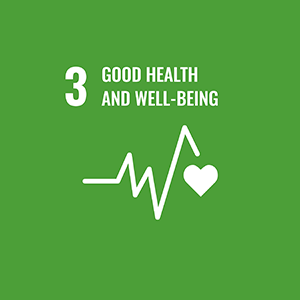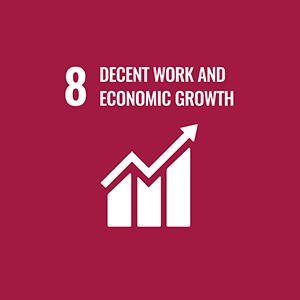-
Environmental Management Policy
As global climate continues to warm and the rate of temperature rise accelerates, KEMFLO activelyResponding to the competent authority of the operational location.The carbon reduction initiatives for industry and society actively engage in energy-saving and carbon reduction actions, moving towards the path of low-carbon economic transformation.KEMFLOSet carbon reduction targets based on science and commit to reducing total carbon emissions year by year, strengthening environmental management performance during operations.
At the same time, KEMFLO will work with value chain partners to strengthen operational resilience, accelerate technological innovation and industry layout, and seek opportunities and new business prospects amid the risks brought by climate change. In the face of future climate challenges, KEMFLO will continue through systematic的Environmental governance and collaboration, working hand in hand with partners towards a sustainable future.
-
Environmental management goals
In order to implement environmental sustainability and effective resource utilization, KEMFLO has established clear environmental management goals based on operational characteristics and environmental risk assessment results, and promotes energy saving, carbon reduction, water conservation, and waste reduction actions with the principle of continuous improvement each year. The specific goals are as follows:
|
Items |
Target |
Explanation |
|
Energy |
Save electricity every year1% |
KEMFLO enhances overall energy efficiency by replacing high-energy-consuming equipment, introducing high-efficiency motors and lighting systems, and optimizing process electricity efficiency, with the goal of reducing total electricity consumption each year.1%to achieve energy-saving goals and reduce indirect carbon emissions |
|
Greenhouse gases |
Reduce carbon emissions every year1% |
Based on the results of the greenhouse gas inventory, KEMFLO is progressively introducing energy-saving equipment, utilizing renewable energy, improving process emissions, and enhancing resource recycling efficiency. The company aims to achieve at least a 1% annual reduction in total carbon emissions, further moving toward low-carbon operations. |
|
Water resources |
Reduce water usage every year1% |
By optimizing process water efficiency, strengthening recycling and reuse systems, and promoting water conservation among employees, we continuously reduce overall water consumption, setting annual water-saving targets of1%to reduce dependence on and impact on natural water resources |
|
waste |
Reduce every year1% |
Through source reduction, increasing resource recycling rates, and strengthening classification management,KEMFLOEvery year dedicated to the total amount of waste.1%Reduce and enhance waste treatment efficiency, moving towards the goal of zero waste. |
-
Future Planning Direction for Environmental Management
Facing the global climate change trend and international carbon reduction pressure, KEMFLO continues to pay attention to climate-related issues and promotes green transformation at a steady pace. In the future,KEMFLOGradually introduce climate management thinking, planning from multiple aspects such as organizational operations, product design, and supply chain collaboration, and formulate the following three key directions:
|
Promote low-carbon technology and green transformation |
KEMFLO will continue to pay attention to the development trends of low-carbon technology, gradually aiming to improve energy efficiency and reduce carbon emissions. It is initially planned to evaluate the introduction of clean energy, energy-saving equipment, and related technologies as a medium to long-term development direction in the future. |
|
Establish a carbon footprint management mechanism |
KEMFLO recognizes carbon footprint tracking as an important foundation for climate governance. In the future, it will gradually establish a framework for the integration and analysis of carbon emission data, serving as a reference for formulating carbon reduction targets and management strategies. It will also strive towards a management system that covers all stages of operations and the upstream and downstream of the value chain. |
|
Introduce the concept of circular economy |
KEMFLO will assess the feasibility of circular economy-related models, initially focusing on improving resource efficiency and reducing waste, promoting the reuse of internal resources and recycling management, while exploring the sustainable possibilities of product design and supply processes, in order to gradually move towards the long-term goals of resource sustainability and zero waste. |
-
Environmental governance structure
To effectively promote sustainable development and climate action, KEMFLO has established a clear environmental governance mechanism, covering a multi-level structure of decision-making, execution, and supervision, ensuring that environmental policies are implemented and continuously optimized.
-
Highest governing body:EHS Committee
KEMFLOhas established the EHS (Environment, Health, and Safety) Committee as the company’s highest environmental governance body. Composed of senior management, the committee is responsible for reviewing overall environmental and energy management policies, climate change strategies, and annual carbon reduction targets. It also regularly monitors the implementation progress and effectiveness of related initiatives to ensure consistency and foresight in the organization’s sustainability-oriented decision-making.
-
Execution and Promotion Unit: Cross-departmental Collaboration Structure
To ensure that the environmental strategy can be effectively implemented, KEMFLO is jointly undertaking tasks and leveraging synergies from multiple core departments:
|
Occupational Safety Section |
Responsible for coordinationKEMFLOOverall emission reduction and energy-saving action plan, formulate execution plans, supervise progress, and promote horizontal collaboration among departments to ensure that carbon reduction targets are achieved year by year. |
|
Utilities Section |
Focusing on energy management and technological innovation, leading the development and evaluation of energy-saving equipment, promoting energy efficiency improvements and optimizing energy usage structure, and gradually introducing feasibility planning for clean energy technology. |
|
Procurement Department |
Actively promote the concept of a green supply chain, establish cooperation mechanisms with upstream and downstream suppliers, gradually introduce environmental labels, low-carbon materials, and sustainable packaging, and achieve the extension and expansion of environmental management through procurement. |
-
Environmental management strategy
Facing the multiple challenges brought by climate change, KEMFLO continues to strengthen its environmental management system, gradually promoting sustainable transformation from risk identification, system establishment to capacity building. The overall strategy includes two core aspects:
|
Risk Assessment |
KEMFLO actively identifies the risks and opportunities that climate change may pose to its operations, including supply chain disruptions caused by extreme weather, fluctuations in raw material costs, and compliance pressures arising from increasingly stringent policies and regulations in various countries, using this as a basis for formulating response strategies and resource allocation. |
|
System establishment |
In order to enhance the organization's ability to respond to climate risks, KEMFLO has developed the "Environmental Risk Management Manual," which systematically establishes mechanisms for identification, response, and recovery, and sets response priorities based on risk levels. At the same time, key environmental performance indicators are incorporated into the performance evaluation system of the senior management team, promoting a strong connection between sustainable thinking and decision-making. |
-
Environmental management as of 2025
|
Items |
Performance as |
|
Energy |
In 2025, one air compressor will be replaced with a variable frequency model, which is expected to save approximately 283,500 kWh per year. |
|
Greenhouse gases |
This year, a gasoline car was replaced with a hybrid car, reducing some carbon emissions. |
|
water resources |
2025Yearly process water,The manufacturing department invested this year5New production line,From water measurement to gas measurement,Use water-saving measures1500L/Test water for the day. |
|
waste |
In addition to the regular implementation of measures for the proper classification of industrial waste.,Also promote the classification of waste for monitoring and disposal.,to increase the resource recycling rate |









